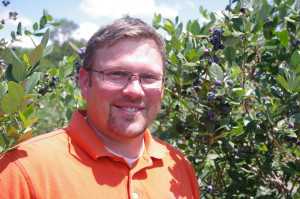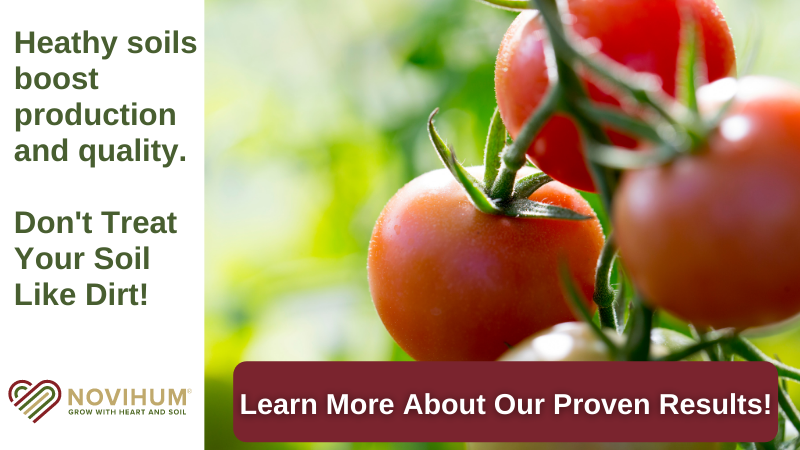Blueberry Breeder James Olmstead Breaking New Ground
Editor’s Note: James Olmstead is an assistant professor of blueberry breeding and genetics at the University of Florida’s Institute of Food and Agricultural Sciences. He’s also part of a group of young researchers working closely with the fruit industry to help growers adapt for the future. In other words, he’s part of GenNext. For more information, go to www.gennextgrowers.com.

Jim Olmstead, University of Florida
Q: What are your current responsibilities?
My current assignment is 80% research and 20% teaching. Growers are the ones that adopt the varieties I develop through my breeding program, so I try to work closely with Extension specialists and county agents to get the information out about new blueberry varieties.
Q: What are your primary focus areas at the University of Florida?
My primary focus area is blueberry breeding and genetics. We develop southern highbush blueberry varieties suited for southeastern production areas. My research program includes traditional breeding efforts leading to variety development, genetic research on traits that have the potential to impact blueberry production, and the adoption of molecular marker-assisted breeding strategies.
Q: Outside of your education, what sort of farming background, if any, do you have?
I grew up in Grandview, WA, in the Yakima Valley of eastern Washington state. Four generations of my family have grown fruit in that area, and the family farm is still going strong with my brother now. My dad was always looking for new varieties of the fruit we grew, and that is what initially sparked my interest in plant breeding.
Q: Do you have regular contact with fruit growers? If so, what is your preferred method of communication with them?
I communicate with blueberry growers in Florida. We have a fall and spring meeting of the Florida Blueberry Grower’s Association each year, and I hope to be on the agenda for at least one of them annually. I work with a network of grower cooperators to evaluate advanced selections from my breeding program, and communication ranges from truck window to text message.
Q: What are some of the primary challenges you see growers dealing with, and what can you do to help them?
I think labor is foremost on everyone’s mind these days. We are trying to identify varieties that would give producers the opportunity to mechanically harvest blueberries and market them as a fresh product. Since most of our fresh production has traditionally been hand harvested, this is a major shift in breeding priorities.
Q: What are some areas on which you would like to focus in the future? How might these be of benefit to growers?
Fruit quality is a huge focus area. Blueberry consumption is increasing globally, and I believe increasing fruit quality is the key to continuing this upward trend.
Q: Can you discuss any of the varieties you’re working on that are suitable for mechanical harvesting?
We’re using several approaches to try to move toward variety releases that could work for either hand or machine harvest for fresh market. We’ve evaluated several of the most recent variety releases by including them in machine and hand harvest trials for direct comparison. From these trials, FL01-173 (Meadowlark), Farthing, and Sweetcrisp were three that seemed to have the right combination of traits that allowed for machine harvest for fresh market. We’ve also established several trial sites for advanced selections that will be exclusively machine harvested, because we learned from our initial trials that you can’t always predict what selection will do the best by the time the fruit is in the clamshell. Finally, we’re looking long term and breeding with native blueberry species such as sparkleberry, which often has a single trunk and very upright growth habit.
Our breeding efforts are for southern highbush varieties, which are adapted to low-chill production areas in the southeastern U.S. Some grow as far north as North Carolina, as well as the Central Valley of California.
Q: When you talk to growers, what are the variety traits most important to them?
The question tends to come down to the maturity season, with earlier always being better. Apart from that, we talk about yield, chilling requirement, fruit quality, and disease resistances most often.










